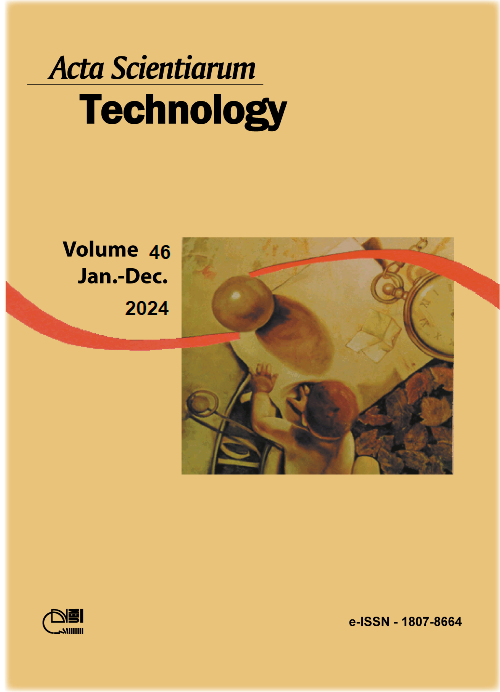Influence of Water Concentration on the Water/Vapor/ Oil Separation Process in a Vacuum Oil Filter: Modelling and Simulation
DOI:
https://doi.org/10.4025/actascitechnol.v46i1.69552Palavras-chave:
water evaporation model; separation efficiency; the vacuum oil filter; water concentration; water-in-oil emulsion.Resumo
The vacuum oil filter (VOF) is widely applied in the oil-water emulsion demulsification separation due to the phase separation by using vacuum evaporation; however, the micro-dynamic characteristics of oil, water and vapor three phases and the influencing factors of separation efficiency are rarely studied. Therefore, the fluid flow and phase separation characteristics of water-in-oil emulsions were numerically analysed by ANSYS software. The demulsification conditions of water/oil emulsion were simulated by using the two-fluid model and the water evaporation model, and the turbulence effect was considered by using the Reynolds stress model. The results show that the established model could provide a convenient way to study the effects of the different water concentrations in oil; the turbulence intensity in VOF increases with the increase of water concentration in oil; The separation efficiency has been influenced by the inlet water concentration reaching values between 20.65-22.62% in the center axis, while 33.18-42.24% in the plate column; the vapor concentration ranged from 0 - 23.64% in the center axis, while 0 - 41.02% in the plate column. The relative volume fraction of water concentration decay tending with the water concentration increases, and the water concentration has a great influence on the separation efficiency.
Downloads
Downloads
Publicado
Como Citar
Edição
Seção
Licença
DECLARAÇíO DE ORIGINALIDADE E DIREITOS AUTORAIS
Declaro que o presente artigo é original, não tendo sido submetido í publicação em qualquer outro periódico nacional ou internacional, quer seja em parte ou em sua totalidade.
Os direitos autorais pertencem exclusivamente aos autores. Os direitos de licenciamento utilizados pelo periódico é a licença Creative Commons Attribution 4.0 (CC BY 4.0): são permitidos o compartilhamento (cópia e distribuição do material em qualqer meio ou formato) e adaptação (remix, transformação e criação de material a partir do conteúdo assim licenciado para quaisquer fins, inclusive comerciais.
Recomenda-se a leitura desse link para maiores informações sobre o tema: fornecimento de créditos e referências de forma correta, entre outros detalhes cruciais para uso adequado do material licenciado.















